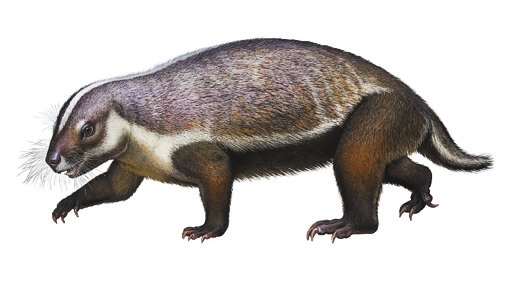
SCIENTISTS have described the ways an ancient “crazy beast,” which lived alongside dinosaurs on Madagascar approximately 66 million years ago, broke the rules of evolution. Officially called Adalatherium hui, which literally translates from Malagasy — the national language of Madagascar — and Greek as “crazy beast,” the mammal was discovered earlier this year and announced in the journal Nature. A team of 14 international researchers have published their comprehensive 234-page monographic treatment examining the creature’s bizarre evolutionary history and features. It was about the size of a modern cat or an opossum, according to researchers at Stony Brook University in the U.S., and the skeleton is the most complete for any mammal ever discovered from this era in the southern hemisphere. The animal is also surprisingly large for mammals of its time, which were believed to be about the size of mice, and is expected to have burrowed to hunt for food and avoid dinosaurs. The 234-page treatment, consisting of seven separate chapters, is part of the Society of Vertebrate Paleontology (SVP) Memoir Series, a special yearly publication that provides a more in-depth treatment of the most significant vertebrate fossils. Among the crazy beast’s notable features are its spine, which contains more trunk vertebrae than most other mammals, its muscular hind limbs that were placed in sprawling position, and its brawny sprinting front legs that were tucked underneath the body. It had a strange gap in the bones at the top of its snout, and front teeth which combined with back teeth which were “completely unlike those of any other known mammal, living or extinct.” “Knowing what we know about the skeletal anatomy of all living and extinct mammals, it is difficult to imagine that a mammal like Adalatherium could have evolved; it bends and even breaks a lot of rules,” said Dr David Krause. Adalatherium’s complete skeleton was found in rocks in Madagascar that were dated to roughly 66 million years ago. By this time, Madagascar had already been separated from Africa for over 150 million years. (SD-Agencies) | 
